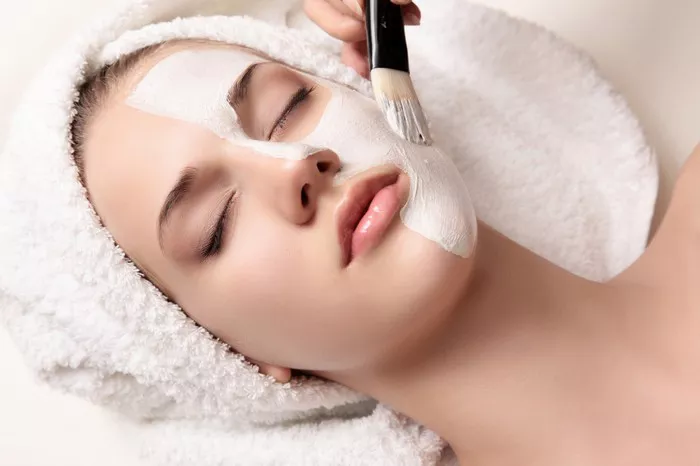Scars are a natural part of the healing process after an injury or skin condition, but many people seek ways to minimize their appearance or remove them altogether. While scars may never fully disappear, there are various treatments that can significantly reduce their visibility and improve skin texture. In this article, we will explore the different types of scars, the factors that influence scar healing, and the methods and treatments that can help remove or reduce old scars. Whether the scar is from an acne breakout, a surgical procedure, or a burn, there are several options available to target and treat old scars.
Understanding Scars: What Are They?
Before we explore treatments, it’s important to understand what a scar is and why it forms. A scar is the body’s natural way of healing and repairing skin after an injury. The skin consists of several layers, and when the skin is damaged, the body produces collagen to repair the wound. This collagen buildup results in a scar.
Types of Scars
There are several types of scars, and their appearance depends on the depth, size, and cause of the injury. The main types of scars include:
Hypertrophic Scars: These scars are raised, red, and thick. They occur when too much collagen is produced during the healing process, causing the skin to be raised above the surrounding area.
Keloid Scars: Similar to hypertrophic scars, keloid scars are raised and can spread beyond the original wound. Keloids are more common in individuals with darker skin tones.
Atrophic Scars: These scars are depressed or sunken, often resulting from conditions like acne, chickenpox, or injury. Atrophic scars occur when the skin doesn’t produce enough collagen during the healing process.
Contracture Scars: These scars can occur after severe burns. They cause the skin to tighten and may limit movement, as the skin pulls together during the healing process.
Stretch Marks (Striae): Stretch marks are a form of scar caused by rapid stretching of the skin, often from pregnancy, rapid weight gain, or growth spurts.
Each type of scar requires a different approach for treatment. Some treatments may work better for certain types of scars than others, and it’s important to understand which type of scar you are dealing with in order to choose the most effective solution.
Factors That Affect Scar Healing
The healing process varies from person to person, and several factors influence how well a scar will heal:
Age: Younger people typically heal faster and may develop less noticeable scars.
Genetics: Some people are more prone to developing hypertrophic scars or keloids due to their genetic makeup.
Skin Type: People with darker skin tones may be more prone to keloid formation.
Location of the Scar: Scars in areas of high tension, such as joints, may be more likely to form hypertrophic scars.
Wound Care: Proper wound care can significantly impact scar formation. If a wound is not properly cleaned, covered, or treated, it may lead to more noticeable scars.
Infection: Infections during the healing process can cause scars to become more severe and noticeable.
Methods to Reduce or Remove Old Scars
While there is no guaranteed way to completely remove old scars, there are several treatments available to help minimize their appearance. The effectiveness of these treatments depends on factors like the type of scar, how long the scar has been present, and the individual’s skin type.
1. Topical Treatments
Topical treatments are the most common and accessible option for managing scars. They work by softening and moisturizing the scar tissue, as well as encouraging cell turnover. Some ingredients have been shown to improve the appearance of scars over time.
Silicone Gel or Sheets
Silicone is one of the most widely recommended treatments for reducing the appearance of scars. Silicone gel or silicone sheets are applied directly to the scar and work by hydrating the scar tissue, reducing collagen production, and protecting the area from external factors that could worsen the scar.
How It Works:
Silicone sheets or gels create a protective barrier over the scar, which helps retain moisture and prevent further irritation.
They also help reduce inflammation and redness.
Effectiveness:
Studies have shown that silicone-based treatments can significantly reduce the size, color, and texture of scars, especially when used consistently over several months.
How to Use:
Apply silicone gel to the scar and allow it to dry.
For silicone sheets, apply them over the scar and wear them for several hours or overnight, depending on the product instructions.
Vitamin E
Vitamin E is a popular ingredient in many scar treatments, with claims that it can reduce scar formation and improve the appearance of old scars.
How It Works:
Vitamin E is an antioxidant that promotes healing and helps reduce inflammation.
It is thought to increase collagen production, which can help smooth out scars.
Effectiveness:
The evidence on vitamin E’s effectiveness for scar treatment is mixed. Some studies show that it can improve the appearance of scars, while others have shown little to no benefit.
However, some people report positive results when using vitamin E topically on scars.
How to Use:
Apply a small amount of pure vitamin E oil directly to the scar once or twice daily.
Be cautious, as some individuals may experience skin irritation or allergic reactions to vitamin E.
Corticosteroid Creams
Corticosteroids are anti-inflammatory medications that can help reduce the redness, swelling, and thickness of certain scars, particularly hypertrophic and keloid scars.
How It Works:
Corticosteroids reduce inflammation and collagen production, helping to flatten and soften scars.
They are typically applied directly to the scar or injected by a healthcare provider for more severe cases.
Effectiveness:
Corticosteroid treatments are particularly effective for reducing the size and appearance of hypertrophic and keloid scars.
This treatment may require several weeks or even months of use to see noticeable results.
How to Use:
Use as directed by your healthcare provider.
Over-the-counter corticosteroid creams can be used, but prescription-strength options may be necessary for more stubborn scars.
Chemical Peels
Chemical peels are a popular treatment for reducing the appearance of scars, especially atrophic scars such as acne scars. This treatment involves applying a chemical solution to the skin, which causes the outer layer to peel off, revealing newer, smoother skin underneath.
How It Works:
A chemical solution (such as glycolic acid or salicylic acid) is applied to the skin, causing the outer layer to exfoliate and regenerate.
This process helps reduce the appearance of scars, improve skin texture, and promote cell turnover.
Effectiveness:
Chemical peels can be effective for improving the texture and appearance of old scars, especially for individuals with shallow scars.
Deeper scars may require multiple treatments or more advanced procedures.
How to Use:
Chemical peels should be performed by a dermatologist or licensed professional, as improper application can result in skin damage.
3. Microneedling
Microneedling is a treatment that involves using tiny needles to create micro-injuries in the skin. This stimulates the body’s natural healing process and promotes the production of collagen and elastin, which can help improve the appearance of scars.
How It Works:
A dermaroller or dermapen is used to create tiny punctures in the skin, which triggers the skin’s healing response.
This leads to the production of new skin cells and collagen, which can fill in and smooth out scars.
Effectiveness:
Microneedling is especially effective for atrophic scars (such as acne scars) and can significantly improve their appearance over time.
It may take several treatments to see noticeable results.
How to Use:
Microneedling should be performed by a professional, although at-home dermarollers are available.
Aftercare is important to reduce the risk of infection and promote healing.
4. Laser Treatments
Laser treatments are another effective option for improving the appearance of scars. There are different types of lasers used for scar treatment, including fractional lasers and CO2 lasers, which target the skin’s deeper layers to stimulate collagen production and improve skin texture.
Fractional Laser
How It Works:
Fractional lasers create tiny columns of heat in the skin, which encourage collagen production and help improve the texture of scars.
This method is effective for reducing the appearance of both hypertrophic and atrophic scars.
Effectiveness:
Fractional laser treatments can improve the texture, color, and appearance of scars, especially with multiple sessions.
Results vary depending on the depth and type of scar.
CO2 Laser
How It Works:
CO2 lasers are used to remove the outer layer of skin and stimulate collagen production in the deeper layers.
This treatment is effective for reducing deep, stubborn scars, including acne scars and surgical scars.
Effectiveness:
CO2 lasers provide more dramatic results compared to fractional lasers and are often used for more severe scarring.
How to Use:
Laser treatments should only be performed by a licensed dermatologist or skincare professional.
It typically requires several sessions, depending on the severity of the scar.
5. Surgical Scar Revision
For severe scars, surgical intervention may be necessary. This involves removing the old scar tissue and stitching the wound in a way that minimizes the appearance of the scar.
How It Works:
A surgeon will carefully remove the scar tissue and close the wound with precise stitches to promote better healing and less visible scarring.
Effectiveness:
Surgical revision is effective for large, noticeable scars, such as those resulting from accidents or surgery.
It can result in a significantly more aesthetically pleasing scar, although there is still a risk of developing a new scar.
How to Use:
Surgical scar revision should be done by a qualified plastic or dermatologic surgeon.
Conclusion
While old scars may never fully disappear, there are many effective treatments available to reduce their appearance. Whether you choose topical treatments like silicone gel, more advanced options like chemical peels and microneedling, or professional treatments such as laser therapy and surgical revision, there are various ways to improve the look of scars. The most suitable treatment will depend on the type of scar, its age, and the individual’s skin type and healing process.
Consulting with a dermatologist or healthcare professional is essential to determine the best course of action for your scars. With patience and the right treatment, it is possible to significantly improve the appearance of old scars and achieve smoother, more even skin.
Related Topics



































